Can Snails Live in Water?
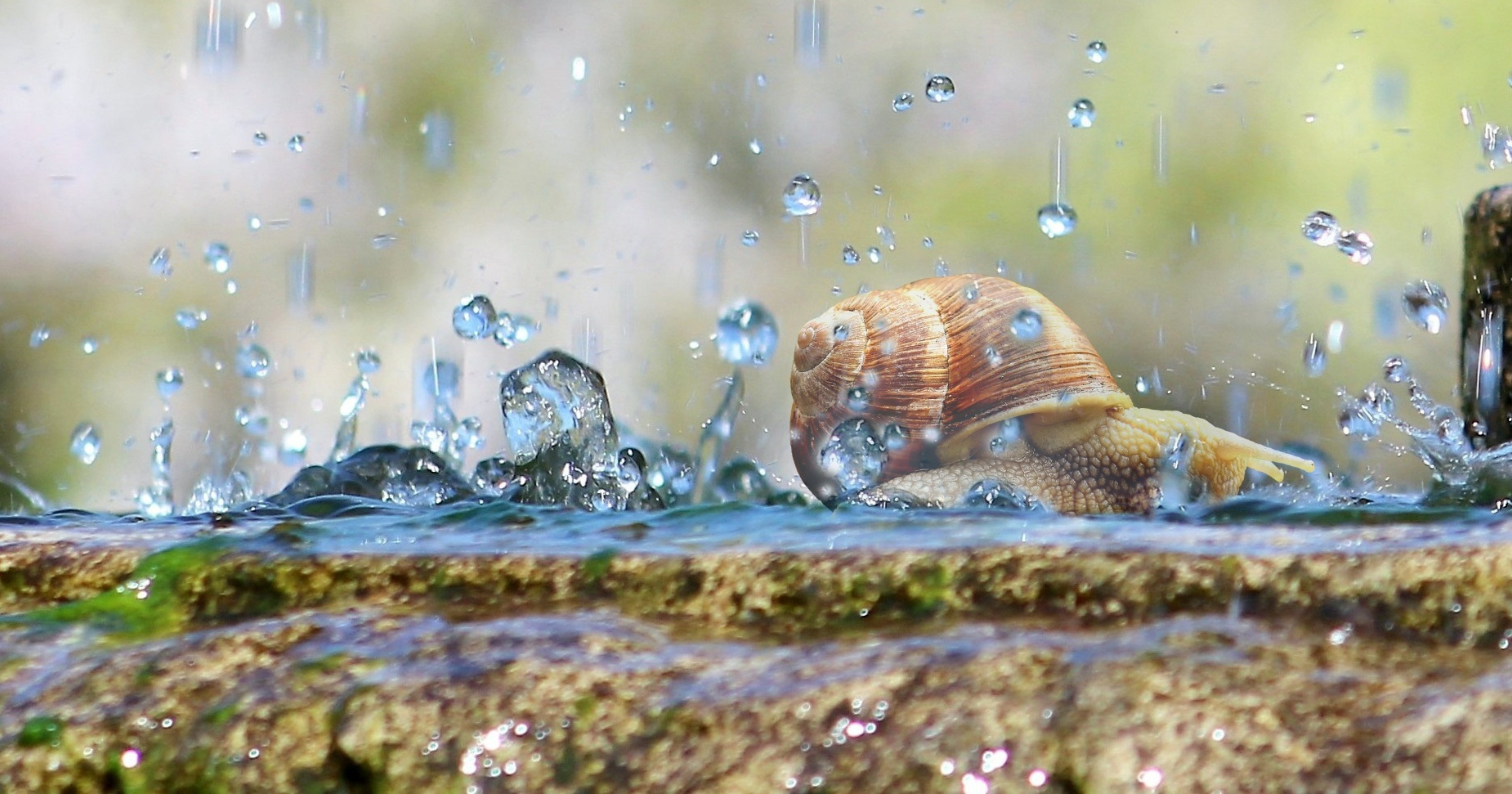
Snails are fascinating creatures with various species found in diverse habitats worldwide. Their ability to thrive in different environments raises the question: can snails live in water? To answer this, it’s essential to understand that snails are classified into three main categories: land, sea, and freshwater.

Depending on their species and mode of respiration, some snails can indeed live in water. Freshwater snails, for instance, are gastropod mollusks that reside in lakes, rivers, and other freshwater sources. Similarly, sea snails inhabit saltwater environments like oceans and seas. On the other hand, land snails require a moist environment but cannot survive underwater as they have lungs and cannot breathe in water.
In summary, while some snail species can live in water, others are restricted to land or moist habitats. It’s crucial to remember that the ability of a snail to survive in water largely depends on its species and individual adaptations. So, when caring for snails, providing the appropriate environment to ensure their survival and well-being is essential.
Contents
Table of Contents
The Basic Functioning of Snails
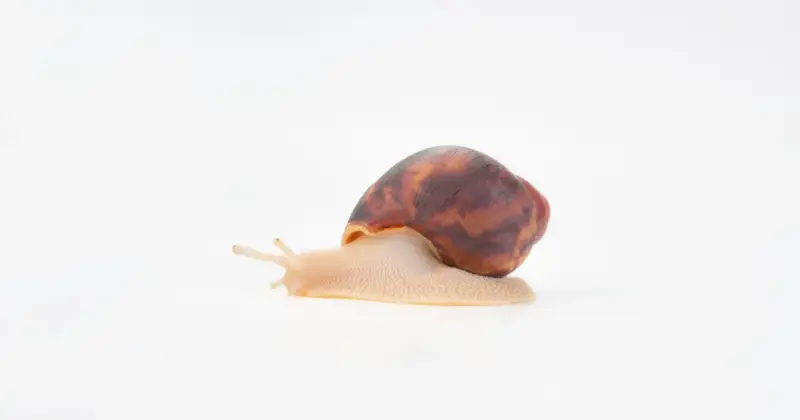
Snails are fascinating creatures in various habitats, such as water and land. Snails have different ways of surviving and adapting to their surroundings, depending on their environment. In this section, you will explore the basic functioning of snails, focusing on their shells, lungs, gills, slime, and respiratory systems.
A snail’s shell serves as a protective covering and a home. Snails like freshwater and sea snails possess this hard outer shell in aquatic environments. It assists in retaining moisture and protects from predators. On the other hand, land snails have a similar shell with slightly different properties, as they need to withstand drier conditions.
The respiratory systems of snails vary based on their habitat. Aquatic snails typically have gills that allow them to extract oxygen from the water. On the other hand, most land snails are pulmonates, which means they possess a lung for breathing in air. This difference in respiratory adaptations is crucial for their survival in distinct environments. Some snails, however, have developed the ability to breathe air and water, making them more versatile.
Slime is another key aspect of a snail’s functioning. This mucus-like substance, secreted by snails as they move, helps reduce friction and aids in their mobility. Moreover, this slime allows land snails to retain moisture and protects them from desiccation. For aquatic snails, it can play a role in protecting them from harmful substances in the water.
In conclusion, snails are adaptable creatures with diverse ways of functioning in different environments. From their protective shells to their respiratory systems and the use of slime, these invertebrates have developed various tools to survive and thrive, whether on land or in water.
Environment Needs
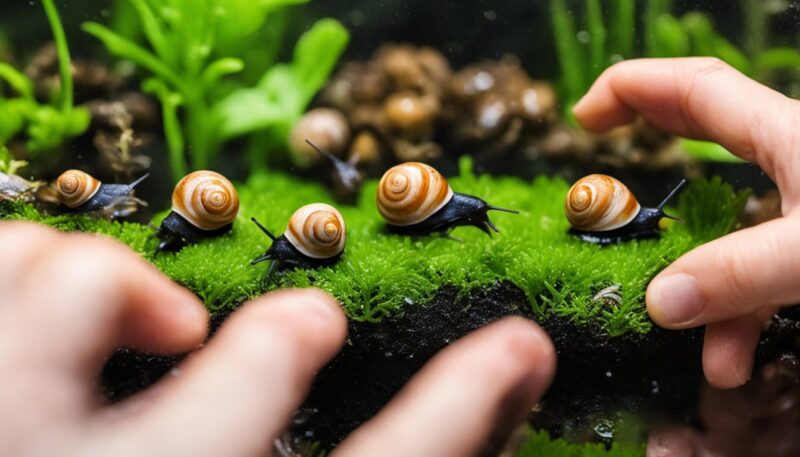
As a snail caretaker, you need to understand the environmental needs of these interesting creatures. Many snail species do live in water, particularly in freshwater habitats. The environment in which snails can thrive depends on temperature, humidity, and water conditions.
Water is an essential requirement for snails to survive and stay healthy. Snails that live in water, like freshwater snails, need to be submerged or immersed in water most of the time. These aquatic snails obtain oxygen, food, and other necessities from the surrounding water.
Temperature has a significant impact on the well-being of snails. The optimal temperature range for snails varies depending on the species, but generally, it should be moderate and consistent. Sudden fluctuations in temperature can cause stress in snails and affect their overall health. Ensure you maintain the appropriate temperature for the snail species you have in your care.
Humidity is another important factor, especially for terrestrial snails that rely on moisture to breathe and prevent dehydration. A suitable humidity level not only helps snails to maintain their activities but also aids in their reproduction, as it creates a favorable environment for mating and laying eggs.
Water conditions must also be taken into account when caring for aquatic snails. Providing suitable living conditions is essential to keep snails in a healthy state. Ensure that the water in which snails live is clean and free from pollutants that could be harmful to them. Regular monitoring and water changes may be necessary to maintain the desired water quality.
In conclusion, as you plan to care for these fascinating creatures, it is vital to pay attention to their environmental needs, such as water, temperature, humidity, and water conditions. By creating an environment that closely mimics their natural habitat, you’ll help ensure that your snails stay healthy and happy.
Types of Aquatic Snails

When it comes to aquatic snails, there are various species found in different environments. These gastropods have adapted to various living conditions, from marine habitats to freshwater ecosystems. As you explore the world of aquatic snails, you’ll find different types suitable for different aquatic settings.
Freshwater Snails
Freshwater snails are gastropod mollusks that live in various habitats ranging from ephemeral pools to large lakes and rivers. Some common types include:
- Mystery snails: These snails are popular for freshwater aquariums because they’re fun to watch and easy to care for.
- Trumpet snails: Also known as Malaysian trumpet snails, they’re frequently found in aquariums as they help to keep the tank clean by consuming detritus and algae.
- Ramshorn snails: With a unique flat, coiled shell resembling a ram’s horn, these snails are also beneficial for controlling aquarium algae.
- Pond snails: Typically found in lakes and ponds, they often thrive in slow-moving bodies of water with lots of vegetation, like bladder snails.
Saltwater Snails (Sea Snails)
Sea snails are gastropods, similar to their freshwater cousins but adapted to saltwater environments. Some common types found in marine habitats are:
- Nerite snails: Known for their attractive, patterned shells, they are popular in marine aquariums and help control algae growth.
- Rabbit snails: With their unique, cone-shaped shells, they are a distinctive addition to marine aquariums and are known for their slow, graceful movements.
- Zebra snails: As their name suggests, they have striking black and white striped shells, making them a visually appealing choice for saltwater aquariums.
Some species, like nerite snails, can also thrive in brackish water – a mix of fresh and saltwater.
As you delve deeper into the world of aquatic snails, it’s crucial to understand their needs and habitats to care for them properly. Whether adding them to your aquarium or observing them in the wild, these diverse gastropods offer a unique and fascinating glimpse into the world beneath the water’s surface.
Aquarium Snails Types – 22 Different Freshwater Aquarium Snails
Relationship with Freshwater
Freshwater environments provide a natural habitat for a variety of snail species. As an aquatic pet enthusiast, you might be interested in adding snails to your freshwater aquarium or learning more about their life in freshwater.
There are a significant number of snail species that live in freshwater ecosystems, such as sea snails and freshwater snails. These organisms can thrive both in the wild and in well-maintained fish tanks. When keeping snails, consider selecting species like Nerite, Apple, or Mystery snails, as they are well-suited to freshwater aquariums.
Introducing snails to your fish tank can be beneficial for your aquatic pets. In particular, snails play a crucial role in maintaining a balanced ecosystem by helping to break down waste and detritus. Additionally, they serve as a natural algae control mechanism, as they feed on algae growth and keep your tank clean.
While snails can coexist with aquatic pets like fish and shrimp, be aware of potential conflicts. Some fish species, such as puffer fish and certain larger cichlids, are prone to prey on snails. To ensure a harmonious environment, it’s essential to research the compatibility between snails and your current tank inhabitants before introducing them to your freshwater aquarium.
Caring for snails in your freshwater aquarium is relatively straightforward. They require a stable water temperature, proper filtration, and a substrate miming their natural habitat. Generally, snails demand very little special attention, allowing you to place your focus on the overall health of your aquarium.
In conclusion, including snails in your freshwater aquarium can offer numerous benefits and an exciting addition to your tank. Snails can become valuable assets in maintaining your aquarium’s health and aesthetic appeal with proper care and research on species compatibility.
Interactions with Outdoor Environments
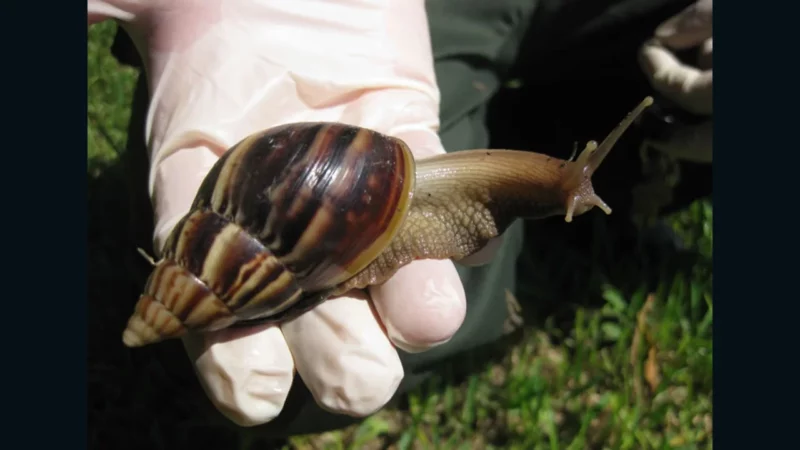
When considering the ability of snails to live in water, it’s essential to understand their interactions with various outdoor environments. As you might know, there are thousands of snail species whose habitat preferences can differ significantly.
In general, land snails prefer moist environments where they can avoid evaporation. For instance, snails thrive in gardens and other terrestrial areas due to sufficient food and shelter availability. They can survive in water if it’s clean and offers enough resources. While garden snails can adapt, they require air to breathe, limiting their ability to survive completely submerged for extended periods.
Land snails remain creatures of water despite their adaptations to terrestrial environments. Many of their activities revolve around conserving water to maintain their bodily functions. Even though they have evolved to live on land, snails still use about 30% of their energy to produce slime for mobility and protection.
In contrast to garden snails, desert snails are better adapted to arid conditions. They can stay dormant for months, hiding within their shells during hot or dry periods. However, these snails still depend on occasional moisture to survive, as they can’t function without water in their environment.
Regarding freshwater and sea snails they find their homes in various aquatic habitats, from rivers and ponds to oceans. These snails have gills, which allow them to live submerged and extract oxygen from the water. This adaptation makes them uniquely suited for life in aquatic environments, but like all snails, they must still manage their energy and resources efficiently.
Snails interact with outdoor environments according to their species and habitat preferences. Land snails, such as garden snails, adapt to terrestrial environments while still requiring moisture and access to air for survival. Their desire to conserve water is a significant aspect of their existence in different outdoor conditions, with each species adapting to specific environments, aquatic, terrestrial, or even arid regions like deserts.
The Snail’s Physical Adaptations
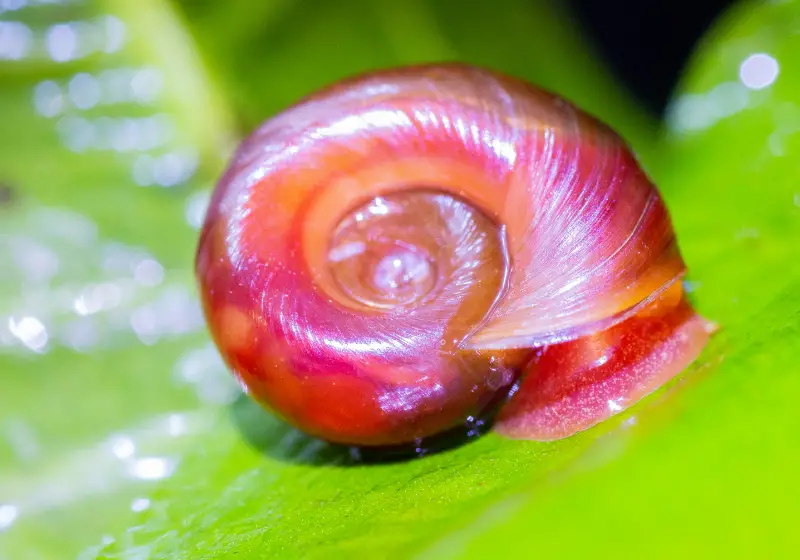
As you explore the world of snails, you’ll discover that these small creatures have fascinating physical adaptations to survive in various environments, including water. Snails have developed unique abilities to move, protect, and breathe underwater.
The snail’s foot is a muscular adaptation that allows it to move on land and in water. The foot contracts and expands, enabling the snail to glide over surfaces. A mucus layer reduces friction and prevents injury as the snail moves (source).
Snails have evolved different types of shells to suit their habitats. Marine snails often have thicker and more robust shells, while freshwater snails may have thinner, more delicate shells. The shell is a protective barrier, allowing the snail to retract inside when facing threats or harsh conditions.
An essential feature that enables certain snails to live and move in water is the respiratory system. Aquatic snails have a specialized organ known as a gill, which extracts oxygen from water, while some freshwater snails possess lungs and a snorkel-like structure called a pneumostome. The pneumostome is a small hole through which the snail breathes air, and when submerged, it can use the extendable snorkel to access oxygen from above the water’s surface (source).
To summarize, snails have developed various physical adaptations depending on their environment. These adaptations include specialized structures for movement, protection, and respiration, allowing them to thrive in terrestrial and aquatic habitats.
Snails in Home Aquariums
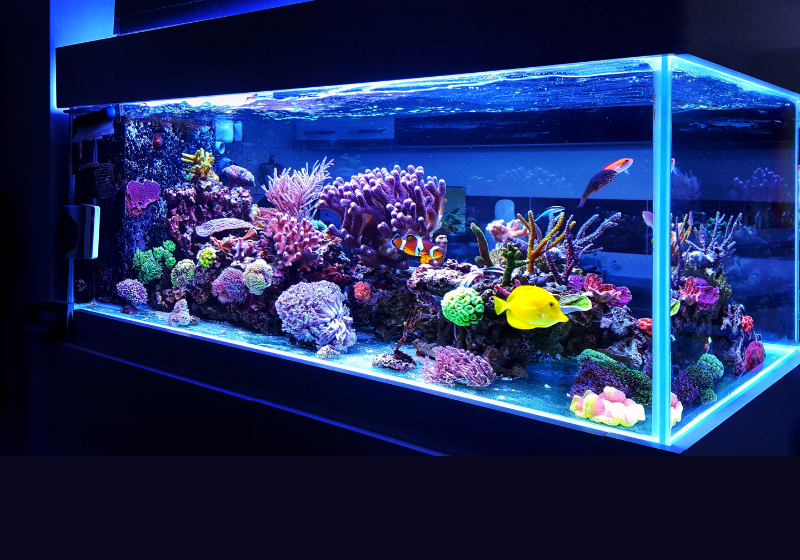
Setting up the Tank
Setting up a proper tank for your aquarium snails is crucial for their survival and well-being. While choosing a tank, ensure it is spacious enough to accommodate the number of snails you intend to keep. Most species of snails, like the mystery and trumpet snails, do well in freshwater tanks.
Aquariums with lids are recommended to prevent snails from escaping and provide adequate ventilation. For instance, you can maintain the water level in the aquarium ½ inch below the top to allow snails to breathe as suggested by Petco. Make sure to research the specific water conditions required for the species of snails you plan to keep, such as temperature and pH levels.
Snail Care and Maintenance
Caring for snails in your aquarium involves maintaining proper water conditions and providing a healthy diet. Snails, such as the popular black devil snails, are easy to care for and can thrive in various aquarium water types, making them perfect for beginners, as mentioned by HomeTanks.
As for your snails’ diet, most aquarium snails eat algae and decaying plant matter, but you can also provide supplementary food like fresh vegetables and algae wafers. Keeping the tank free of debris and dead plant materials will prevent unsightly and harmful build-ups.
Pet freshwater snails will also need periodic maintenance to help them stay healthy. Manually remove snails when cleaning the tank, and you can even use chopsticks or a siphon to take them out as suggested by FamilyHandyman gently.
It is important to note that not all snails can live in water. For example, the giant African land snail is a terrestrial species and cannot survive in an aquatic environment. Always research the specific needs of the snails you choose for your aquarium to provide the best possible care.
Snails in the Food Chain

As you explore the world of snails, it’s important to understand their role in the food chain. Their presence in different environments can tell you a lot about the health of an ecosystem. Snails, particularly freshwater snails, can be found in various habitats ranging from ephemeral pools to the largest lakes and from small seeps and springs to major river sources.
Snails play a crucial role in the food chain as consumers and prey. They primarily feed on algae, plant material, and decaying organic matter, helping in nutrient cycling and keeping the environment clean. Moreover, freshwater snails can be essential indicators of water quality, as they are sensitive to certain environmental changes and pollution sources.
While snails might seem small and insignificant, they provide an important food source for many predators, including birds, fish, amphibians, and mammals, such as raccoons. As a result, snails maintain the balance and diversity of life in their habitats.
Here are some key points about snails in the food chain:
- Snails help recycle environmental nutrients by consuming algae, plant material, and decaying organic matter.
- They act as indicators of water quality and can signal changes in the ecosystem.
- Snails serve as a valuable food source for various predators, supporting biodiversity in their habitats.
So, as you study the intricate connections of the food chain, always consider the vital role that even the smallest creatures, like snails, play in maintaining the balance and functionality of various ecosystems.
The Underwater Lifestyle of Snails
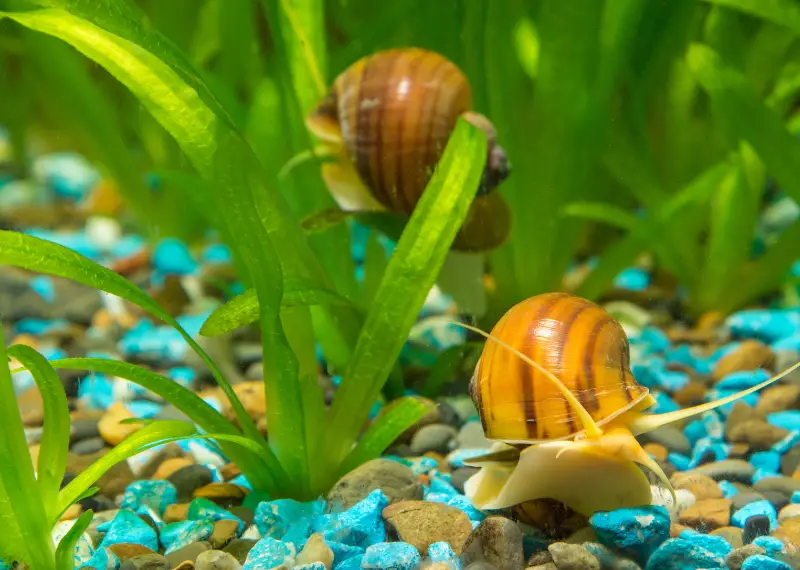
As you explore the world of snails, you’ll find that many live in water. Most snails are aquatic, meaning they need water to survive. These water-dwelling snails are found in various habitats, ranging from tiny ponds to vast oceans.
Freshwater Snails
In freshwater snails, numerous varieties are found in lakes, rivers, and even ephemeral pools or small seeps worldwide. Freshwater snails have shells, with very few exceptions. They thrive in various habitats, allowing them to adapt to different water conditions.
Sea Snails
Moving to the salty oceans, you’ll encounter sea snails. These slow-moving marine gastropod molluscs can be found along coastlines and ocean depths. Examples include whelks and abalones, which have visible external shells. Sea snails often inhabit coral reefs and other marine ecosystems.
Breathing Underwater
While some snails, such as garden snails, have lungs and cannot breathe underwater, aquatic snails have unique adaptations for underwater respiration. Some have gills that allow them to extract oxygen from the water as they swim or crawl across submerged surfaces. Others, like pond snails, have a special tube called a siphon to draw in water and absorb oxygen.
Immersed vs. Swimming
Although some snails can swim, most prefer to crawl along surfaces while submerged in water. By secreting a sticky slime, these snails can cling to rocks, plants, and other underwater elements, allowing them to move more easily through aquatic environments.
As you understand snails and their underwater habits, remember that not all snails live in water. Some terrestrial species, like slugs, thrive on land. However, most snails are adapted to live happily within aquatic environments, whether in freshwater or salty seas.
The Misunderstanding of Snails and Drowning

When you think of snails, the first image that comes to your mind might be that of a slow-moving creature leaving a slimy trail on the ground. However, there is a common misconception about snails and their relationship with water, specifically their ability, or inability, to survive underwater.
Different snail species have various ways of interacting with water. It is essential to understand that snails cannot breathe underwater, even though some might be found near bodies of water. Like the common garden snail, land snails can drown if submerged in water for extended periods. These snails need to breathe air and, if trapped underwater, will eventually run out of oxygen and drown.
In contrast, aquatic snails are much better equipped to survive underwater. Some aquatic snail species have gills, allowing them to breathe while submerged. Others might need to come up for air occasionally but can still spend much of their life underwater. For example, freshwater snails may need to breathe air at times while living mostly in water.
When land snails find themselves in water, they may attempt to float or retract into their shells to protect themselves from drowning. Retraction helps them conserve oxygen, giving them time to find a way out. However, this survival strategy is not foolproof. Given enough time, the lack of oxygen will eventually lead to the snail’s demise.
In conclusion, understanding the differences between land and aquatic snails is crucial for assessing their ability to survive underwater. Land snails can drown if submerged for too long, while aquatic snails are better adapted to underwater life through gills or periodic access to surface air. Keep this in mind when caring for snails or observing them in their natural habitats, and remember that not all snails are the same when it comes to living in and around water.
Frequently Asked Questions: Can Snails Live in Water
How do aquatic snails breathe?
Aquatic snails breathe by extracting oxygen from the water they live in. Some snails have gills, which enable them to extract oxygen directly from the water, while other species have developed a “lung” that allows them to extract oxygen through the water’s surface. Aquatic snails also possess a specialized structure called a siphon to help them breathe efficiently.
What types of snails are found in water?
A variety of snail species can be found in freshwater and marine environments. Freshwater snails include species such as apple snails, nerite snails, and mystery snails. In marine environments, You can find conchs, cowries, and whelks. It is important to note that not all snails can survive in water, as some are strictly land-dwelling creatures.
What do water-dwelling snails eat?
The diet of water-dwelling snails varies based on their species and habitat. Most aquatic snails are omnivorous, consuming diverse nutrients from plant material, algae, and even other small invertebrates. Algae-consuming snails like nerite snails can help control algae growth in aquariums and ponds. Some snail species are carnivores and prey on other aquatic creatures.
How long can land snails survive in water?
Land snails are not adapted to survive in water for extended periods. While some land snails can temporarily survive in water for short durations, they will eventually drown if they cannot reach a dry surface. Land snails breathe air through their lungs and are not equipped to extract oxygen from the water like their aquatic counterparts. It is crucial to avoid submerging land snails in water for an extended time.
Do water snails lay eggs?
Yes, water snails lay eggs. The reproductive process varies between snail species, but most lay eggs in a gelatinous mass on solid surfaces or aquatic plants. Generally, aquatic snails have a relatively high reproductive rate, and their eggs can develop and hatch within a few weeks, depending on environmental conditions.
Can all snail species live in water?
No, not all snail species can live in water. While many snails are aquatic, some are strictly land-dwelling creatures. Land snails have lungs and are not equipped to breathe underwater, making them incapable of surviving in water for extended periods. Understanding the specific needs and habitat requirements of the snail species you are interested in keeping is essential.

![What Do Apple Snails Eat? [Full Guide]](https://allourcreatures.com/wp-content/uploads/2021/10/what-do-apple-snails-eat-768x512.jpg)
![Do Snails Have A Foot? [Full Guide]](https://allourcreatures.com/wp-content/uploads/2021/11/snail-foot-768x577.jpg)
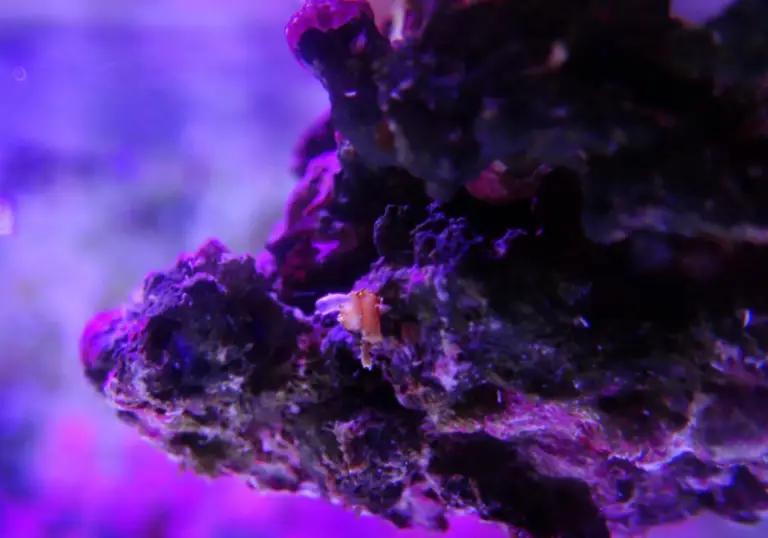
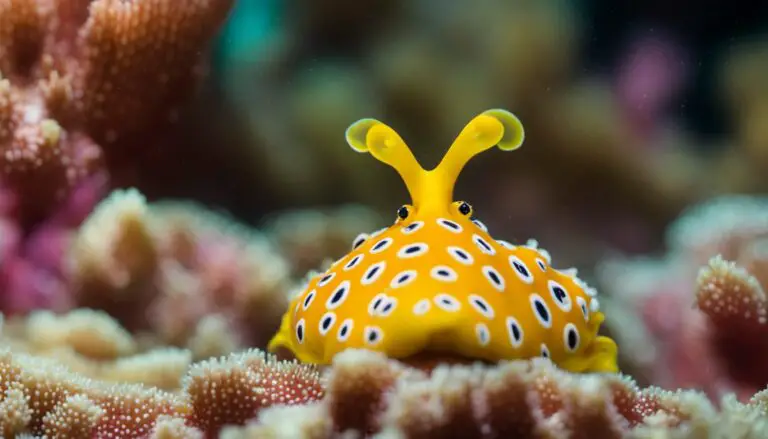
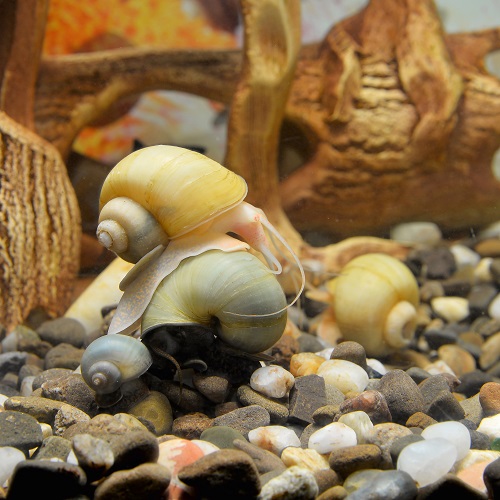
![Do Snails Need Water? [Complete Guide]](https://allourcreatures.com/wp-content/uploads/2021/11/do-snails-need-water-768x513.jpg)